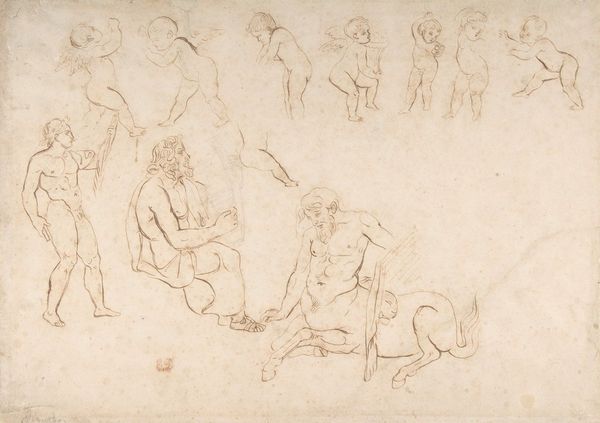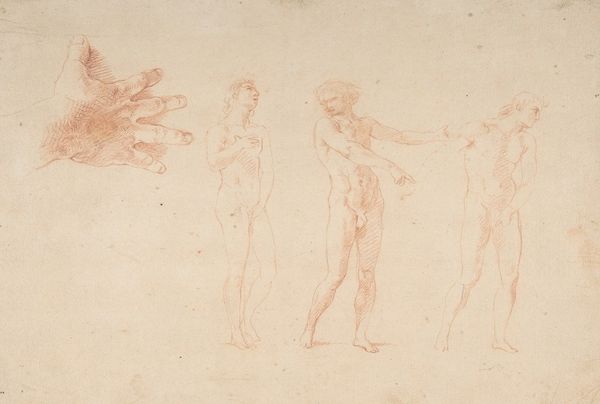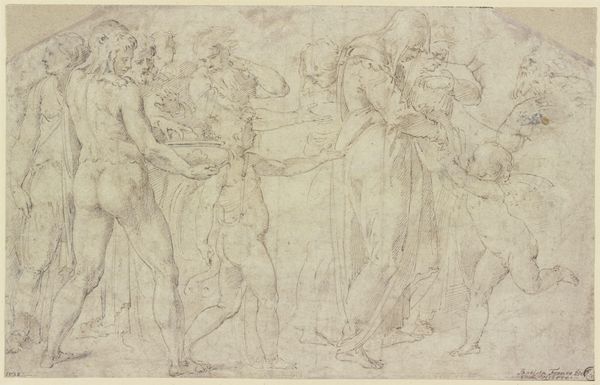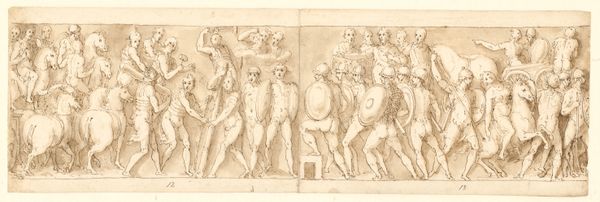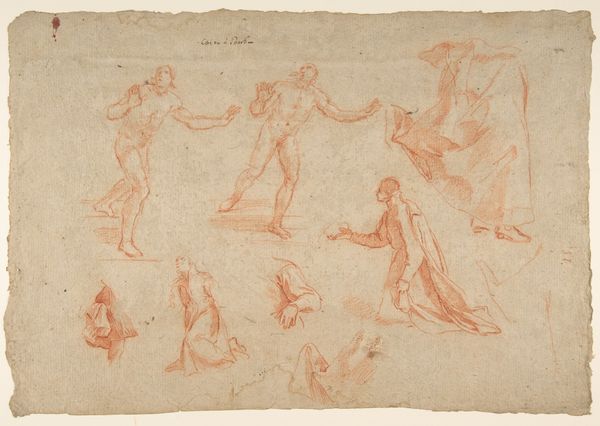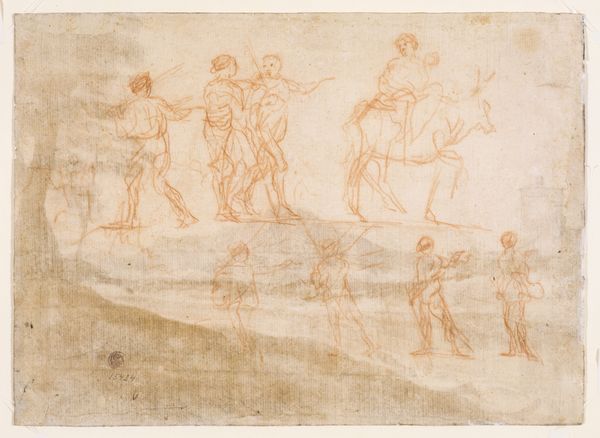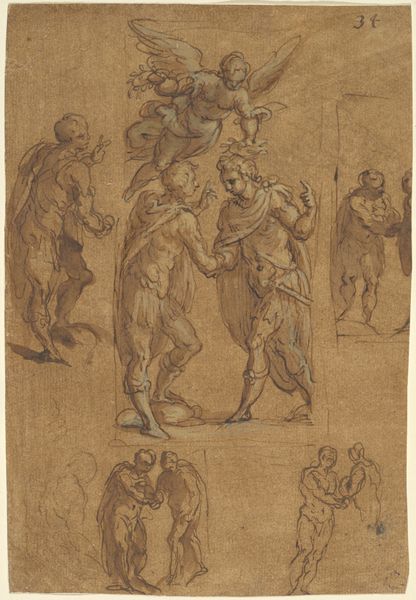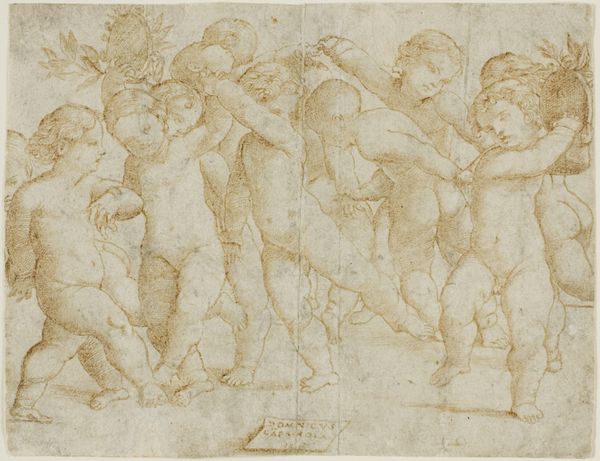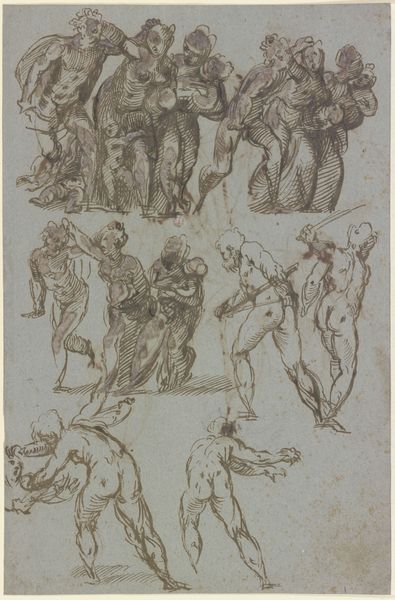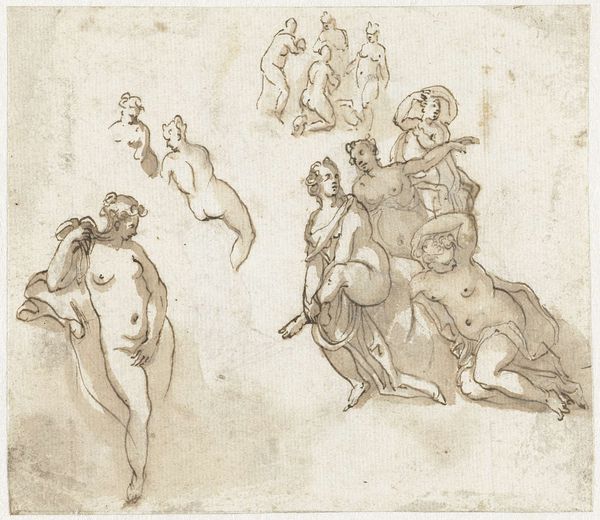
drawing, pencil
#
portrait
#
drawing
#
pencil sketch
#
figuration
#
pencil drawing
#
pencil
#
italian-renaissance
#
early-renaissance
Dimensions: overall: 21.3 × 29.7 cm (8 3/8 × 11 11/16 in.)
Copyright: National Gallery of Art: CC0 1.0
Editor: This is "Groups of Male Figures" by Vittore Carpaccio, created around 1514. It’s a pencil drawing. The red chalk gives the figures a warmth, but also a sense of incompleteness, like they’re waiting to be filled in. What jumps out at you when you look at it? Curator: Immediately, the arrangement of figures across the pictorial plane compels attention. Observe how Carpaccio employs grouping to create distinct visual clusters. Do you perceive the implications of their varying poses, the dynamic interplay of gazes, and the modulation in line weight that contributes to the perception of depth? Editor: Yes, the group on the left feels heavier, more grounded, because of the darker lines and how their backs are turned. The lighter group seems almost floating. Curator: Precisely. Now, let us analyze the distribution of light and shadow. Notice how the subtle gradations of shading sculpt the forms, delineating musculature and suggesting the fall of light across their surfaces. Consider, too, the compositional structure. How does the artist utilize the blank space to amplify the expressiveness of the figures? Editor: It almost feels like they are separate studies on one page. Are they supposed to be interacting? Curator: That is open to conjecture, certainly. Reflect, however, on the implications of these discrete groupings, on how the visual and intellectual rhythms between them are suggestive and incomplete, rather than definitively resolved. Editor: I see it differently now. I was so focused on the isolated feeling but looking at it formally makes me notice the contrasts and the way Carpaccio makes your eyes dance across the drawing. Curator: Indeed. Formal analysis allows us a unique mode of insight and appreciation, directing the observer towards intrinsic artistic merit and design principles.
Comments
No comments
Be the first to comment and join the conversation on the ultimate creative platform.
